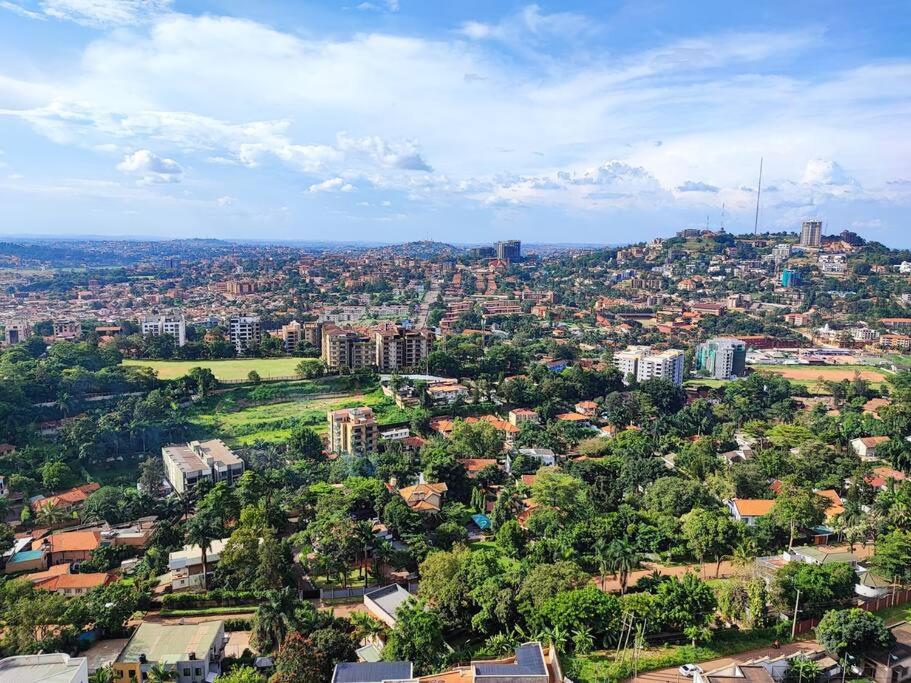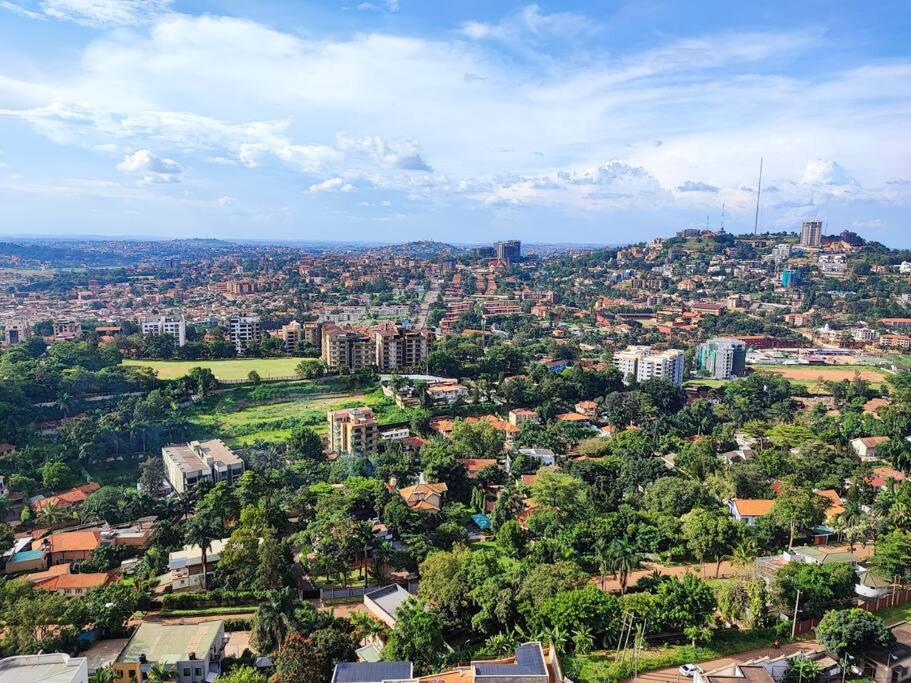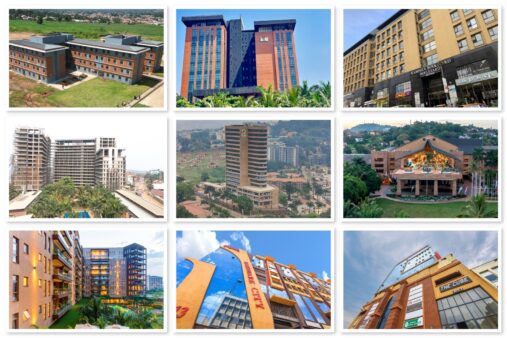Trump Aid Cuts Reshape Kampala’s Housing Market Demand as Asian Expatriates Overtake Western Tenants

Kampala’s residential property market is in the midst of a quiet but telling transformation.
Once dominated by Western expatriates tied to NGOs, diplomatic missions, and donor-funded projects, the demand landscape is increasingly being driven by Asian expatriates—particularly professionals from China, South Korea, and other Asian economies—associated with large-scale infrastructure, industrial, and corporate investment projects.
The sudden suspension of U.S. aid to Uganda has had a direct impact on the sector.
The aid cut has left a UGX 604 billion hole in the national health budget, forcing several large NGOs and related service providers to scale back or exit leases entirely.
This retrenchment has translated into notable vacancies in some of Kampala’s most prominent office developments.
According to the Kampala Market Performance Review for the First Half of 2025 by Knight Frank Uganda, this demographic shift is reshaping tenant preferences, influencing development patterns, and challenging landlords to rethink their offerings.
From NGO-dominated demand to Asian-led growth
The report highlights a notable decline in demand from Western expatriates, largely due to “global redeployments and funding reductions from major donors such as USAID.”
The funding freeze, which took effect in January 2025, disrupted many donor-funded operations in Uganda and led to staff redeployments, downsizing, and reduced housing allowances—especially in traditionally prime residential enclaves like Kololo, Nakasero, and Naguru.
These neighborhoods have long catered to Western tenants who preferred spacious standalone homes and upscale apartments with large floor plans and premium amenities.
But as this tenant base shrinks, landlords are facing longer vacancy periods and greater price sensitivity among the remaining occupants.
In contrast, Asian expatriate demand is rising—a trend Knight Frank links to the growing number of professionals engaged in infrastructure development, manufacturing, trade, and corporate projects in Uganda.
Unlike the Western expatriates they are replacing, many of these tenants seek “modern, functional apartments that are competitively priced and strategically located” close to industrial hubs, business parks, and transport corridors.
The report notes that this shift has led landlords to respond by “introducing contemporary, amenity-rich units at more accessible rental rates” and targeting well-serviced secondary neighborhoods.
The growing presence of non-traditional expatriates and regional tenants, Knight Frank adds, has “played a stabilizing role” in occupancy levels, even if “rental yields have softened slightly.”
Market performance: resilience amid softening demand
Knight Frank’s data shows the prime residential sector softened slightly in H1 2025 as new supply met shifting demand patterns.
Prime occupancy rates fell to 80%, continuing a gradual decline from the peak of 82% in H1 2023.
Average rents for two-bedroom apartments fell by 7% due to increased supply and heightened tenant price sensitivity, while three-bedroom rents remained unchanged for the third consecutive reporting period.
This stability in the three-bedroom segment reflects consistent demand from expatriate families and high-income earners.
While traditional prime areas saw demand taper off, certain secondary suburbs recorded rental growth and improved occupancy. This was driven by a growing preference for “more affordable, well-situated alternatives,” as the report notes.
Overall, Knight Frank describes the market as “cautiously tenant-driven, where supply continues to outpace demand,” but stresses that the prime segment remains “relatively resilient” for “high-quality, professionally managed residences within secure, gated communities offering proximity to essential amenities and infrastructure.”
Airbnb and short-term stays reshape secondary markets
A key trend identified in the report is the boom in short-term rentals in Kampala’s secondary suburbs, including Ntinda, Kigo, Kyanja, and Muyenga.
Platforms such as Airbnb and Booking.com have seen Kampala listings grow by 37% over the past three years, driven by demand from both tourists and business travelers.
However, the rapid increase in listings has led to oversupply in some micro-markets.
Daily rates for one-bedroom units have fallen to $40–$50, and occupancy rates have slipped below 50%—far lower than the 80%+ rates typical in conventional long-term rentals.
Knight Frank warns that this illustrates “both the volatility and saturation risks of short-stay investments in emerging urban zones,” suggesting that landlords who shifted to short-term models to maximize returns now face an increasingly competitive environment.
Organised neighbourhoods gain favour
Beyond the expatriate market, local housing preferences are also influencing Kampala’s residential landscape.
The report notes a growing demand for organised neighborhoods offering enhanced infrastructure, safety, and convenience.
“Once a niche option, gated community living is becoming increasingly mainstream,” Knight Frank observes, driven by the appeal of 24/7 security, paved roads, and reliable utilities.
Suburbs such as Lubowa, Ntinda, Naalya, Kira, Najjera, and Muyenga are in particularly high demand, a trend reinforced by ongoing infrastructure upgrades under the Greater Kampala Metropolitan Area Urban Development Project and the continued rollout of fibre-optic internet to outlying estates.
Sales, lettings, and high-density developments
The most sought-after unit types remain two-bedroom and three-bedroom apartments, although there has been a noticeable increase in one-bedroom listings targeting single professionals.
Demand for standalone houses in prime neighborhoods remains strong, but supply is limited.
In the sales market, activity in prime areas remains subdued, with extended transaction timelines, rising inventories, and greater price negotiations.
In contrast, secondary markets such as Kira and Najjera are gaining traction, as developers pre-sell units by leveraging affordability, high occupancy rates, and modern construction finishes.
Another significant trend is the increase in high-density residential projects in prime neighborhoods.
Developers are replacing older standalone homes in Kololo, Nakasero, and Naguru with multi-unit apartment blocks to maximise land use.
These developments appeal to middle- and high-income residents seeking security, convenience, and proximity to the CBD.
However, Knight Frank cautions that they also raise concerns about infrastructure strain, traffic congestion, and the changing character of traditionally low-density zones.
Supply pipeline: delays in completions
While Kampala’s prime residential pipeline has grown to over 1,200 new apartment units, actual completions remain sluggish.
In H1 2025, only about 120 units were delivered, with delays linked to financing constraints, regulatory bottlenecks, and prolonged construction timelines.
This disconnect between announced supply and delivered units creates a mismatch in market expectations, and Knight Frank warns it is uncertain whether the market will absorb the projected volume once these units are completed.
Outlook: competition to intensify
Looking ahead, Knight Frank projects that tenant-favourable conditions will continue into the second half of 2025.
Several hundred new units are expected to be completed by year-end, coinciding with a period of broader economic caution ahead of Uganda’s 2026 elections.
“Occupancy may soften slightly before stabilizing, particularly in older properties competing with new, high-spec stock,” the report notes.
Landlords are expected to respond with rent moderation or incentives to attract tenants.
However, properties that align with “modern lifestyle expectations”—such as newer builds offering strong amenities, security, and connectivity in strategic locations—are expected to maintain stable occupancy and retain value.
Economic backdrop
The report situates these real estate trends within a relatively stable economic environment. Uganda’s economy grew by 6.3% in FY2024/25, driven by the services sector and improved trade dynamics.
The Uganda Shilling appreciated by 3.8% year-on-year, inflation remained contained at 3.9%, and the Central Bank Rate held steady at 9.75%.
However, the suspension of USAID funding in early 2025 has already had ripple effects, particularly in the NGO sector, which has been a significant driver of prime residential demand in Kampala.
A market in transition
The combined effect of shifting expatriate demographics, changing local preferences, rising short-stay investments, and evolving development patterns points to a residential market in transition.
For landlords, developers, and investors, the challenge will be to adapt to this changing landscape—balancing rental yields against competitive pressures, differentiating new developments in a crowded market, and positioning assets to appeal to the tenants of the future.
As Knight Frank concludes, the outlook hinges on “alignment with evolving tenant expectations” and the ability to deliver properties that meet both modern lifestyle demands and the realities of Kampala’s competitive housing market.
Share this content:

 Inside the Minds of Uganda’s Top Bank CEOs: Reflections, Fears, and the Future of Banking
Inside the Minds of Uganda’s Top Bank CEOs: Reflections, Fears, and the Future of Banking







Post Comment